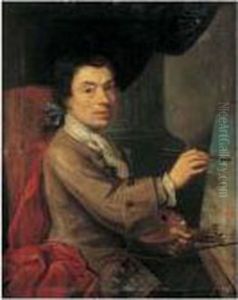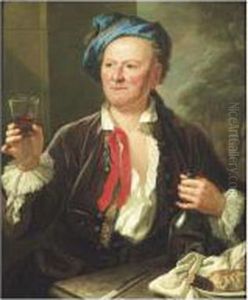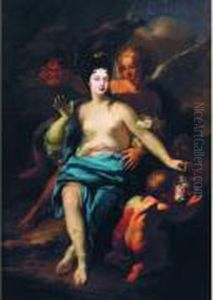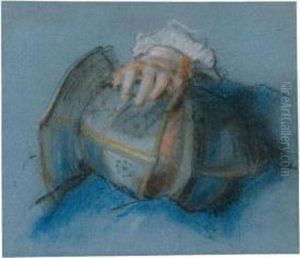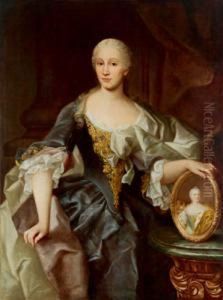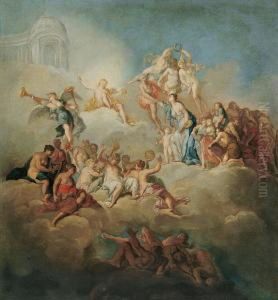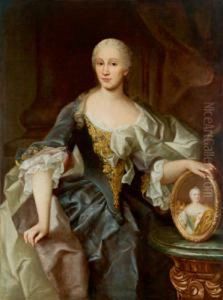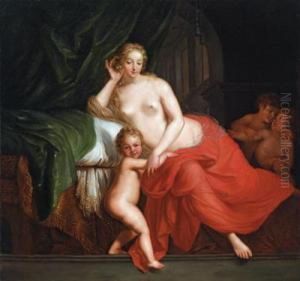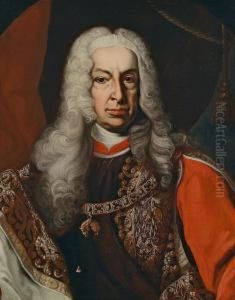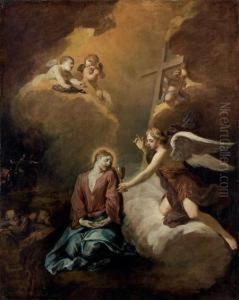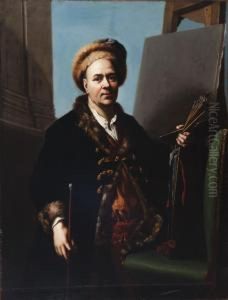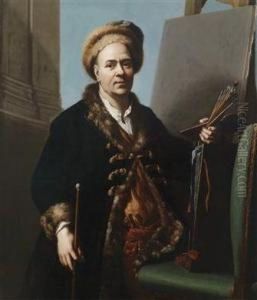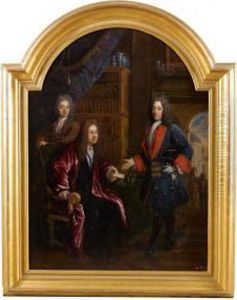Jacob Souppen Van Van Schuppen Paintings
Jacob de Vos Jacobszoon, often simply known as Jacob de Vos, was a distinguished Dutch painter and art collector who lived during the 17th and 18th centuries. Born in 1670 in Paris, France, Jacob was the son of the Flemish painter-engraver Pieter van Schuppen, who was originally from Antwerp. This familial connection to the world of art profoundly influenced Jacob's career path and artistic development. His family's Flemish heritage and their eventual settlement in Paris provided him with a rich cultural and artistic environment.
Jacob's artistic training began under the guidance of his father, where he learned the fundamentals of painting and engraving. His style was significantly influenced by the Flemish Baroque tradition, which was characterized by dramatic expressions, bold coloration, and meticulous attention to detail. However, living in Paris, Jacob was also exposed to the French artistic scene, which added a certain refinement and elegance to his work.
Throughout his career, Jacob de Vos Jacobszoon became known for his portraits and historical paintings. His ability to capture the essence and personality of his subjects won him acclaim and patronage among the French and Flemish nobility. Despite the prominence of his works during his lifetime, Jacob's contribution to the art world was somewhat overshadowed by the more prominent artists of his time.
In addition to his work as a painter, Jacob de Vos Jacobszoon was an avid art collector. He amassed a significant collection of paintings, drawings, and engravings, which included works by some of the most renowned artists of his era. This collection not only reflected his personal taste and aesthetic sensibility but also served as a valuable resource for study and inspiration.
Jacob de Vos Jacobszoon passed away in 1751. Although he may not be as widely recognized today as some of his contemporaries, his work provides a fascinating insight into the cross-cultural influences between the Flemish and French artistic traditions of the late 17th and early 18th centuries. His legacy is preserved in the collections of various museums and in the private holdings of art collectors who appreciate the unique qualities of his art.
